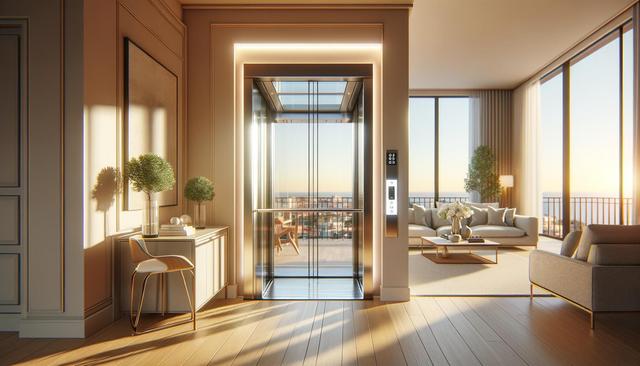The Rise of Residential Elevators
Modern elevators have evolved significantly in recent years, becoming more than just a luxury addition to high-end homes. Today, they serve as a functional and stylish solution for improving mobility, especially for multi-story residences. Whether you’re planning ahead for aging in place or simply looking to enhance your home’s convenience, residential elevators are gaining popularity among homeowners of all ages.
Home elevators now come in a variety of sizes, styles, and drive systems, allowing for seamless integration into different architectural designs. Compact models can fit into tight spaces without requiring major renovations, while larger options offer a spacious ride for wheelchairs or multiple passengers. The availability of energy-efficient models also makes them an environmentally conscious choice.
Some key factors driving the popularity of home elevators include:
- Increased focus on aging in place and long-term accessibility
- Greater availability of space-saving and retrofit-friendly models
- Enhanced design features that blend with modern interiors
- Rising property values and a competitive real estate market
As more homeowners become aware of these benefits, residential elevators are becoming a well-regarded investment in both safety and style.
Safety and Accessibility Features
Safety is a top priority when it comes to incorporating a residential elevator. Modern systems are designed with a range of features that ensure smooth operation and peace of mind. These elevators typically include emergency alarms, battery backup systems, and automatic braking mechanisms, offering reliable performance even during power outages.
For individuals with limited mobility, elevators offer a dignified and independent way to move between floors. This functionality is especially valuable in homes with seniors or individuals recovering from injuries. By removing the physical barrier of stairs, elevators contribute to a more inclusive living environment.
Common safety and accessibility features include:
- Non-slip flooring and handrails for added stability
- Automatic doors or gate systems
- Low-profile thresholds for easy entry
- Voice-activated controls or tactile buttons
These features not only enhance usability but also ensure that the elevator is a dependable part of everyday life.
Design and Customization Options
Modern home elevators are designed to complement your interior rather than stand out awkwardly. With a range of finishes, materials, and lighting choices, homeowners can customize their elevator to match the aesthetic of their space. From minimalist glass shafts to wood-paneled cabs, the design possibilities are extensive.
Customization is not limited to visual elements; functionality can also be tailored. For example, homeowners can choose between hydraulic drive systems, traction elevators, or pneumatic vacuum models based on their space and usage needs. Each system has its own set of advantages, which can be aligned with your home layout and personal preferences.
Popular design customization options include:
- Cab interiors in wood, metal, or glass
- Decorative lighting and ceiling panels
- Custom flooring to match adjacent rooms
- Digital control panels with smart home integration
This level of personalization ensures that your elevator not only serves a practical purpose but also enhances your home’s overall atmosphere.
Installation and Space Considerations
One of the most common concerns about adding an elevator to an existing home is the space requirement. Fortunately, many modern elevators are designed with retrofitting in mind. There are models that require minimal structural changes and can be installed in areas like closets, stairwells, or even attached to the exterior of the home.
Professional installation teams work closely with homeowners and architects to determine the best location and type of elevator for the property. The process typically includes a site assessment, design planning, and coordination with local building codes to ensure compliance and safety.
Key space-saving options available today include:
- Shaft-less or through-the-floor designs
- Compact models that fit in small footprints
- Wall-mounted systems that preserve floor space
- Exterior elevators with enclosed access points
Understanding your space constraints and goals will help you make informed decisions about the type of elevator that fits your home and lifestyle.
Long-Term Value and Maintenance
Installing a home elevator can increase your property value and extend the usability of your home for years to come. Prospective buyers often view elevators as a premium feature, especially if they are planning for multi-generational living or future accessibility needs. Even if you’re not planning to sell, the added comfort and convenience are long-term benefits worth considering.
Maintenance is another important consideration. Most modern elevators are built for durability and require minimal upkeep when serviced regularly. Routine inspections and timely servicing ensure that the system remains safe and efficient. Homeowners should follow manufacturer guidelines and schedule annual maintenance checks with qualified technicians.
Some advantages of regular elevator maintenance include:
- Improved safety and performance
- Extended equipment lifespan
- Reduced likelihood of unexpected repairs
- Maintained energy efficiency
By investing in both the initial installation and ongoing care, your home elevator can continue to deliver value and functionality well into the future.


